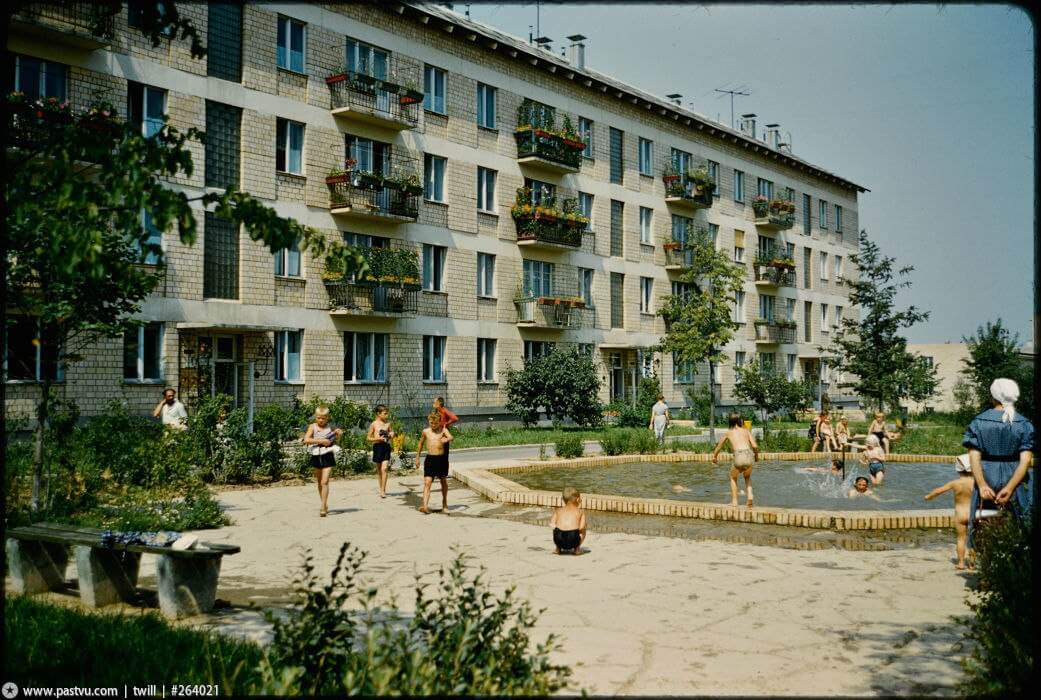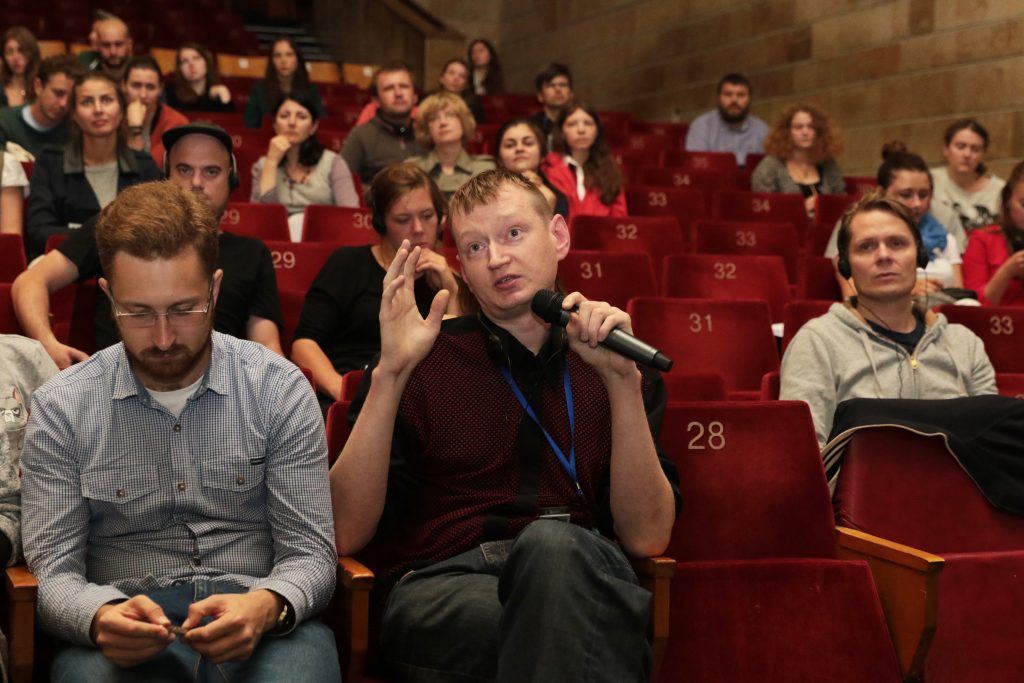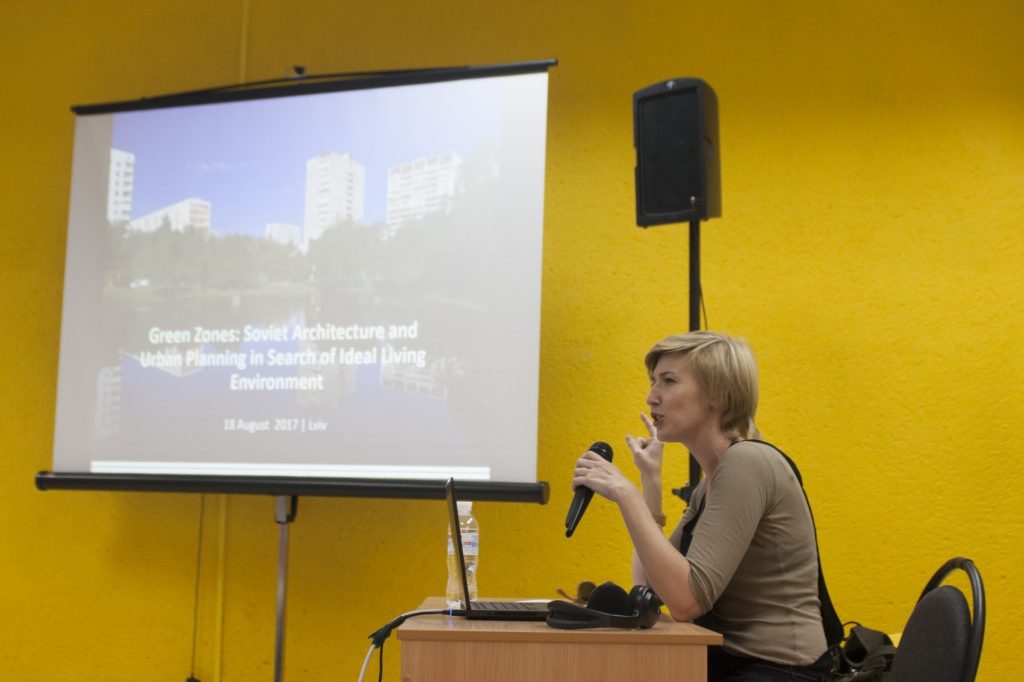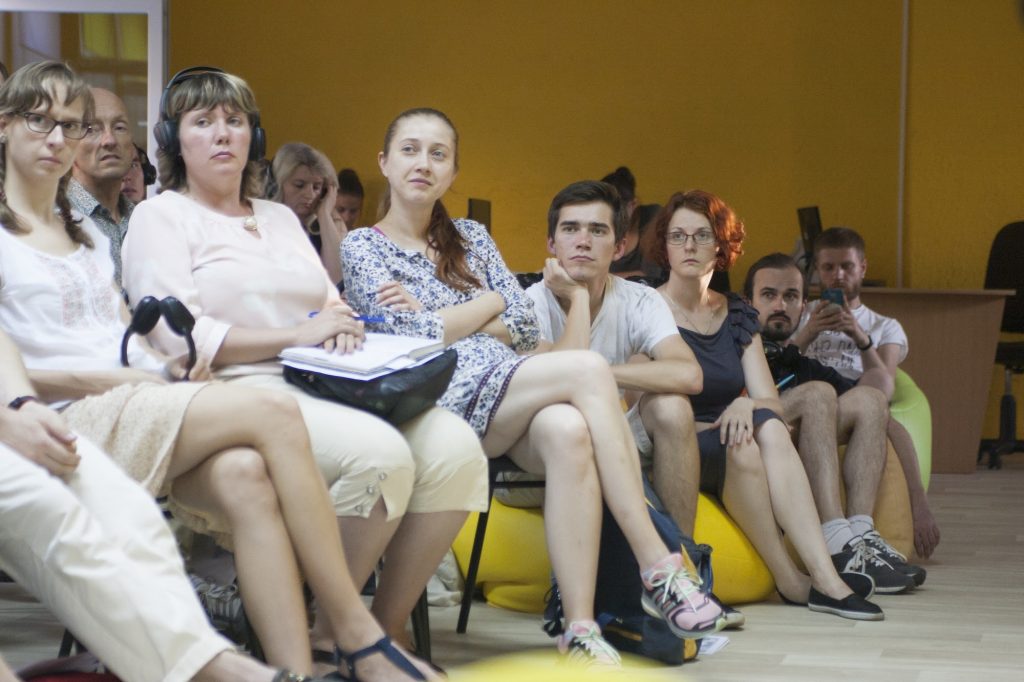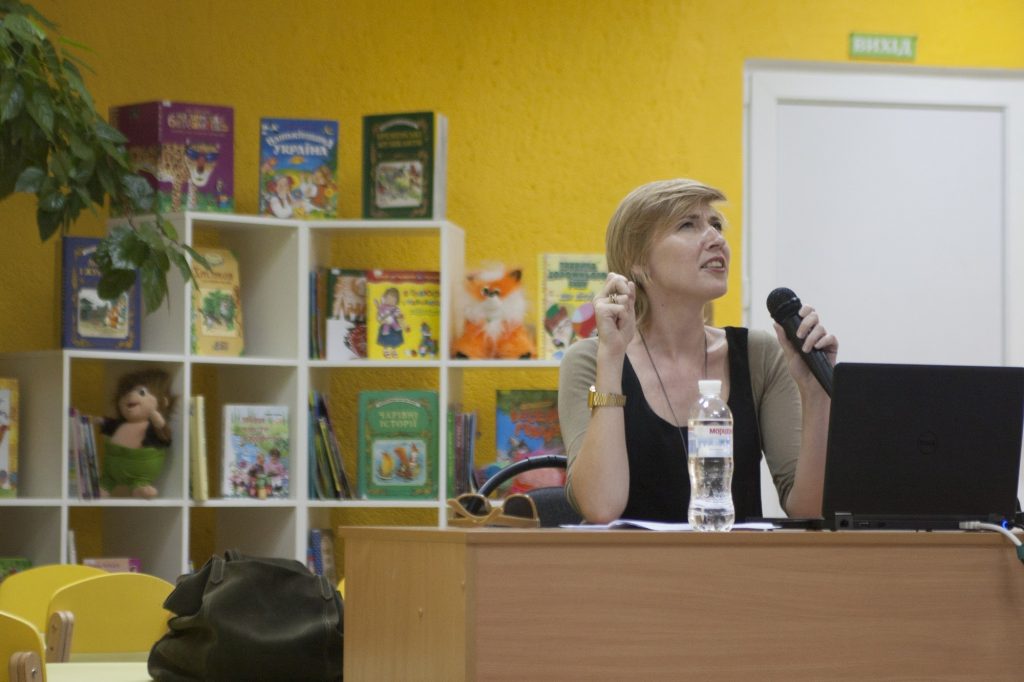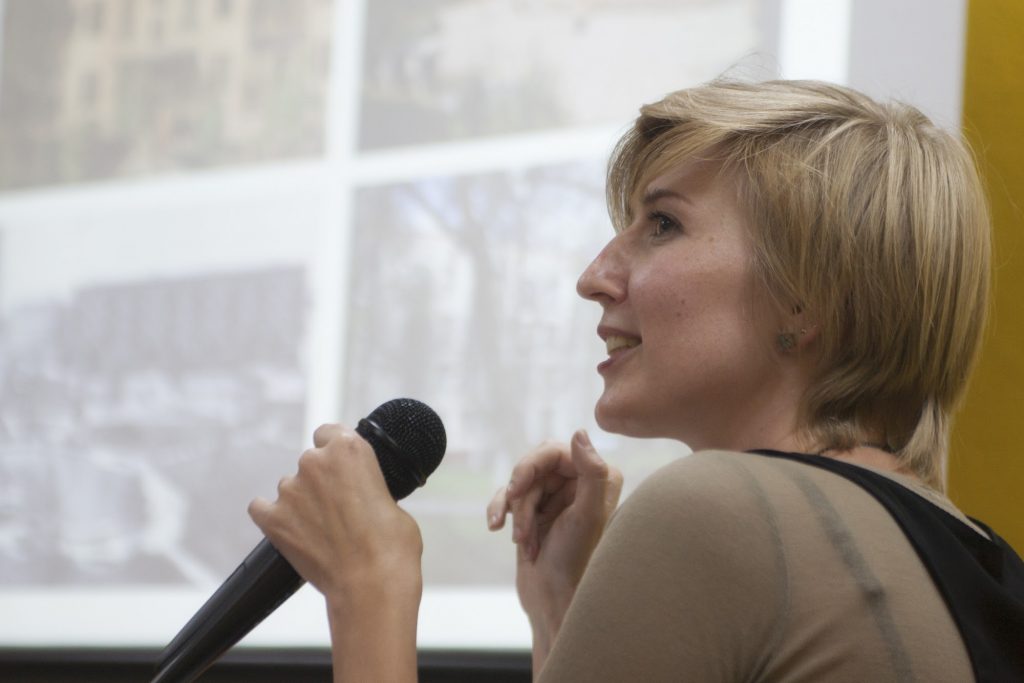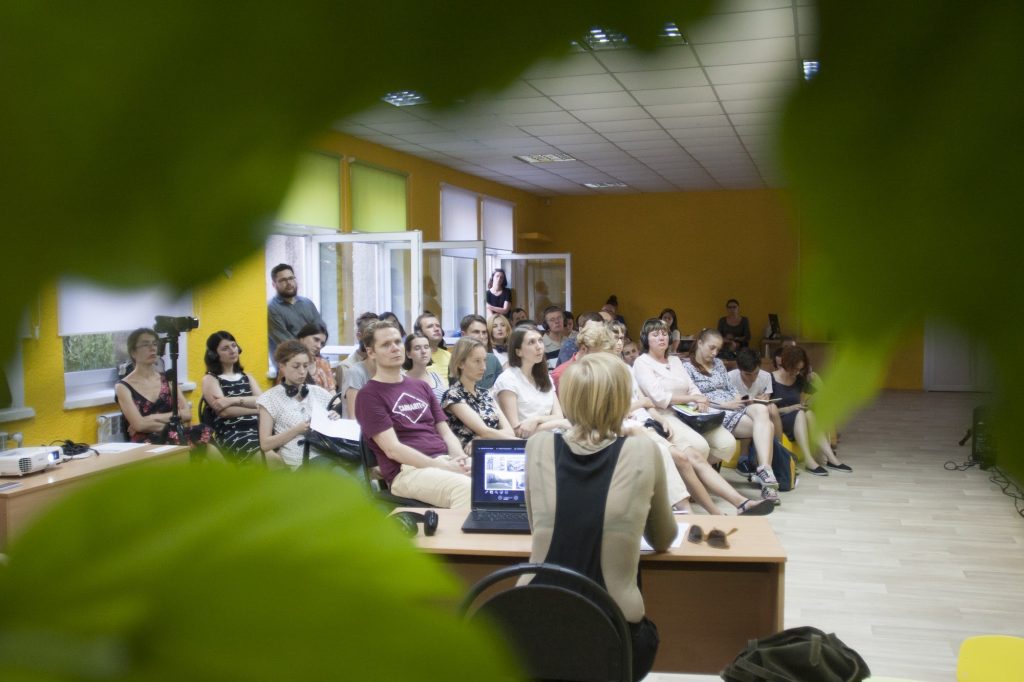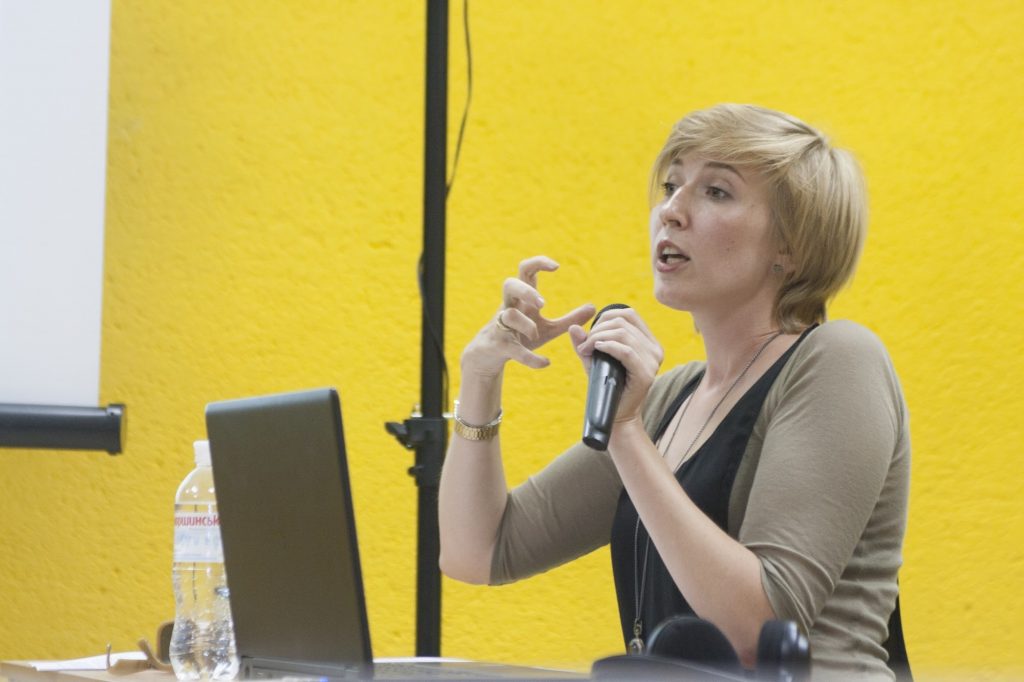Green Zones: Soviet Architecture and Urban Planning in Search of Ideal Living Environment
18.8.2017, 19:00
Library for Children No. 4, 10 Antonenka-Davydovycha Street
Although Soviet mass housing is often associated with gray and monotonous environment, residential neighborhoods created in the 1960-80s remain among the greenest areas in formerly socialist cities with plenty of public spaces for collective leisure activities. The development of green zones in the cities was one of the central ideas of Soviet architecture and urban planning. From early on socialist city was imagined as "a green city". By examining the micro-district theory and experimental projects of the 1960s, the lecture will trace how Soviet architects envisioned an ideal living environment and how they conceived of the relationship between man and nature in the future.
Lecture was hold in English with simultanous translation to Ukrainian.
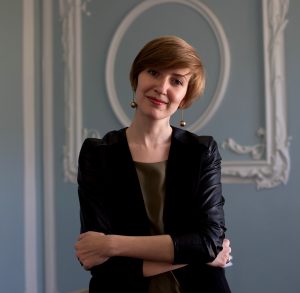
Daria Bocharnikova
is a researcher at the KU Leuven and works for the Center for Fine Arts BOZAR in Brussels. She undertook postgraduate studies in Italy and the US. She defended her dissertation Inventing Socialist Modern: a History of the Architectural Profession in the Soviet Union (1932-1971) at the European University Institute in Florence, Italy. Together with Steve Harris she co-coordinates the Second World Urbanity research initiative, which is focused on the history of urban planning, architecture and everyday life in socialist cities of Eurasia and beyond.
"Sykhiv By Night" is an open public program for broad audiences. It is related to other two projects of the Center for Urban History: the summer school "Sykhiv: Spaces, Memories, Practices" and a research project "Planned and Experienced: Planned Districts in Late Socialism and Beyond."
Credits
Сover Image: 9th quarter of New Cheryomushki, Moscow. 1964
Image Gallery by Andriy Polikovskyy
